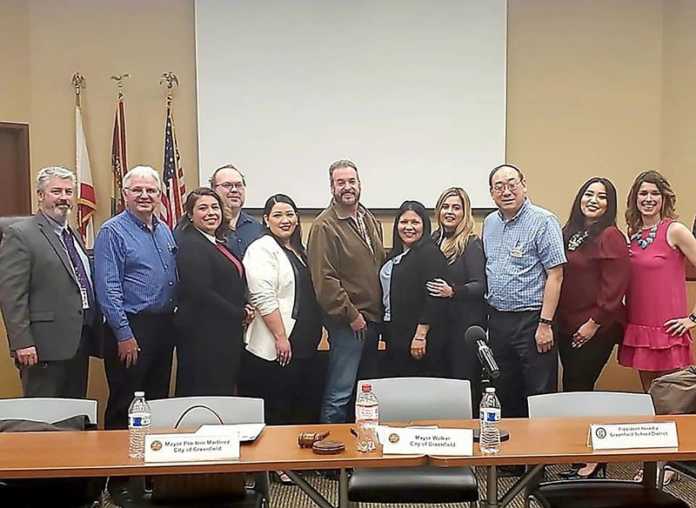GREENFIELD — Greenfield City Council and Greenfield Unified School District Board are teaming up to find solutions to current issues, including adding more school resource officers, improving school safety and establishing a youth council.
March 18 marked the first time the two entities came together for a joint meeting in many years.
“Greenfield has historically provided an SRO (school resource officer) to the high school at the school’s expense,” City Manager Paul Wood said. “Beginning in the 2018-19 school year, both the high school district and the unified school district have requested SROs for the current fiscal year. Due to various issues, the City was unable to supply two SROs to the school districts.”
According to Wood, both Greenfield High School and the Greenfield Unified School District were willing to pay for school resource officers, but one of the major concerns was the long-term cost to hiring a permanent SRO.
Superintendent Zandra Galvan said the Greenfield Unified School District is still interested in having a school resource officer, leaning more toward positive policing.
“We don’t see the same amount of infractions that students are causing,” Galvan said. “We had a huge need last year at our middle school. We want our little guys to be exposed to law enforcement as the good guys, not as the bad guys, and to see them in a positive light.”
Galvan cited the change in keeping Vista Verde Middle School with just seventh- and eighth-grade students as why the number of infractions was reduced. The district receives funding through the Local Control Accountability Plan (LCAP) that would aid in funding a SRO.
It would take about a year to train a school resource officer, according to Capt. James Hunt from the Greenfield Police Department. The time would allow for the recruit to go through the Police Academy and have field training.
The city council and school board also spoke about youth councils. According to Wood, the City has had a long-term objective of increasing public involvement in municipal activities and affairs and assisting local youth in education.
“The objective would be to teach the youth about local government, interacting with local leaders and to work collaboratively in general,” Wood said. “The middle school council could meet and discuss issues at the school level that could potentially be impacted by city council involvement.”
Galvan had some ideas of what the youth council could look like at the elementary school level. Her ideas begin with the student council at each school site made up of fourth-, fifth- and sixth-grade students.
“It’s a group of students that come together and talk about what they want their school activities to be,” Galvan said. “They each have members on that council that kind of make decisions for their school.”
At the middle school, there is an ASB leadership group and an activities director, who instructs two classes on leadership, one for seventh grade and the other for eighth grade.










